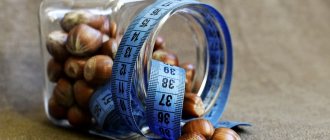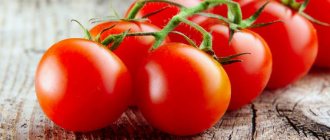Five Factor Diet was created by famous Hollywood nutritionist and fitness trainer Harley Pasternak . Some call it literally a panacea against excess weight. Others are sure that Pasternak did not come up with anything new, but only combined the well-known postulates of nutrition and at the same time reminded everyone of the need for physical activity. One way or another, in recent years Hollywood has literally become obsessed with his five-factor diet, simple and effective.
Testing express diets! Watch the video!
Five week plan
Harley Pasternak's system includes five components. It is on this figure that all its rules are based. This is where its name came from.
The diet course lasts five weeks. According to Pasternak, after 35 days women will certainly get the desired result. A precise time frame avoids the dreaded feeling that the diet will last forever. The person knows exactly how long the restrictions will last. This is very important for motivation. It is the uncertainty of the timing that makes many women break down.
According to psychologists, all our habits are formed within 3-5 weeks. Therefore, there is a chance that later you will get a taste for it and decide to continue this lifestyle. The principle of the Pasternak diet is that a person gradually takes it for granted.
Effect of Spicy Food on FD Symptoms
Many patients with FD, who have been observed by a gastroenterologist for many, many years with a diagnosis of “chronic gastritis” (but we have already figured out the difference between these diseases), are well aware of dietary recommendations during the onset of symptoms. One of the recommendations is to “exclude everything spicy.” We are talking about spices, and, in particular, about capsaicin - the active component of spicy foods (chili, red pepper, etc.).
How harmful is pepper capsacin for FD patients? Alas, science again does not have a clear answer to this question. On the one hand, capsaicin increases the intensity of signals from the nerve endings of the stomach, which can cause an increase in the severity of FD symptoms, in particular abdominal pain. Such symptoms are apparently observed in individuals with increased sensitivity of nerve receptors to chemical irritants. On the other hand, there are results from a very small randomized trial (only 30 patients) showing that ingestion of 2.5 g of red pepper powder for 5 weeks caused a significant reduction in general dyspeptic symptoms overall, as well as epigastric pain or fullness. compared to taking a placebo.
In summary, to date there is not sufficient clinical evidence to recommend avoiding hot spices or eating spicy foods to reduce symptoms in patients with dyspepsia. However, we strongly recommend avoiding spicy foods if they increase or trigger FD symptoms.
Five meals a day
An important component of the system is five meals a day. The fitness trainer believes that you need to eat often and in small portions, consuming very little food. It is necessary to switch to five meals a day, this is very important. By following this regimen, you will not feel terrible pangs of hunger. A psychological complex will not form in your mind that you must constantly limit yourself in everything.
Interesting: Vegetable diet for losing weight by 10 kg in a week
Dishes
Pasternak recommends eating five ingredients at every meal:
- Proteins – seafood, fish, rabbit meat, poultry, beef. Such foods are important for the formation of elastic muscles.
- Complex carbohydrates – all grains (necessary for the body to obtain energy).
- Cellulose. It is found in fresh fruits and vegetables, thanks to which the body is nourished and the gastrointestinal tract is cleansed.
- Easily digestible fats, which include olive and other vegetable oils.
- Any drinks that do not contain sugars.
Food should undergo only slight processing. It is worth giving preference to cereals, fruits and fresh vegetables.
Effect of Diet on FD Symptoms
The well-known “folk” recommendations not to eat hastily, to chew thoroughly, to eat regularly so as not to “get gastritis”, it turns out, have a scientific basis. True, only in relation to the same FD, and not chronic gastritis. Scientific research has proven that eating large amounts of food quickly and eating irregularly can increase the symptoms of FD. This is due to a disruption in the processes of contraction and relaxation of various parts of the stomach during food or liquid intake. There is even a so-called rapid drinking test, which reproduces the typical symptoms of FD when drinking a large volume of liquid in a short time and can confirm this diagnosis.
It is known that the basis for the appearance of FD symptoms may be a violation of accommodation of the stomach muscles, i.e. impairment of the ability of the muscles of the fundus of the stomach to relax after eating. As a result, food quickly enters the outlet (antrum) of the stomach and this can cause heaviness, fullness, and abdominal pain. The study showed that eating large amounts of food quickly and eating irregularly had the same risk of developing dyspepsia symptoms by 1.42 times.
There are works devoted to the influence of the temperature of food and drinks on the contraction of the stomach muscles. Thus, drinking cold liquid promotes contraction of the smooth muscles of the stomach, which can increase not only pain, but also the feeling of heaviness/fullness in the stomach.
Thus, the consumption of cold foods/drinks, as well as fast meals should be avoided in persons with FD, especially with the predominance of dyspeptic symptoms such as heaviness/fullness in the epigastrium after eating. Long breaks in eating (no more than 4 hours) should be avoided, since a pronounced feeling of hunger at the time of the next meal can contribute to overeating.
The effect of fatty foods on FD symptoms
Edible fat is consumed in various forms, depending on the nature of the food consumed and the temperature of the food. Foods high in fat are often associated with a simultaneous high content of carbohydrates (for example, confectionery) or protein (meat and processed products). It is known that in a healthy person, eating a high-fat meal is associated with a decrease in the rate of gastric emptying.
How do dietary fats affect FD symptoms? A 2008 study found that eating a high-fat diet was more associated with FD symptoms such as epigastric pain, nausea, bloating, and early satiety when compared with a high-carbohydrate diet. Moreover, both diets (high-fat and high-carbohydrate) were comparable in energy value (calorie content).
It is also known that cognitive factors influence the intensification or appearance of FD symptoms when consuming fatty foods. Thus, in one of the studies it was once again shown that consumption of foods with a high fat content significantly more often caused the appearance of symptoms of FD, compared with foods with low fat content. However, if patients ate low-fat foods, believing that they were high in fat, they also experienced dyspeptic symptoms.
Thus, patients with FD may be advised to follow a diet that limits foods containing high amounts of fat.
Daily workouts
Pasternak recommends daily exercise for at least 25 minutes a day. Many years of experience as a fitness trainer suggests that short-term exercise is much more effective than long-term exercise. The technique is based on the fact that every day it is enough to practice for 25 minutes. On average, each exercise should take 5 minutes to complete.
Express training from a famous trainer looks like this:
- 5 minutes should be spent on cardio exercise: exercise bike, cycling, running, dancing, jumping rope.
- 10 minutes of strength training: squats, push-ups, biceps curls, using dumbbells for exercise.
- 5 minutes for abs. It is very important to choose the right complex, in which absolutely all abdominal muscles work: lower, upper, oblique.
- Set aside 5 minutes for running.
Use 5 days for rest
This is the easiest and most enjoyable part of the Pasternak system. In 5 weeks, a person has the opportunity to rest for 5 days. What does this mean? Once every 7 days, for example, on Friday or Saturday, you are allowed to take a break from the restrictions. Relaxation in nutrition is necessary so that the feeling of hunger and self-pity does not overpower the desire to bring the body back to normal. Pasternak believes that on this day a person can afford absolutely any food. You can even eat ice cream, sweets, popcorn or even hamburgers.
However, according to other nutritionists, food swings are incredibly dangerous. They are too much stress for the body. After all, within 6 days the intestines will receive the right food, and on day 7 they will begin to load it with preservatives and fried foods. Therefore, you should not go to extremes. You need to allow yourself to relax your diet, but not eat completely harmful foods. For example, you can enjoy good cheese or eat a cake from a pastry shop. But it’s better to avoid fatty ham, grilled chicken, and cakes with rich cream.
Interesting: TOP 5 most dangerous diets for weight loss
Five Factor Diet: Principles
Five main rules (factors) of the diet:
- 1. The diet is designed for exactly 5 weeks. 2. 5 meals a day every day. 3. Dishes from 5 ingredients in 5 minutes. Each meal should include proteins, complex carbohydrates, healthy fats, fiber, and sugar-free drinks. A minimum of heat treatment will preserve vitamins and minerals. 4. 25 minutes of training 5 times a week - five exercises of 5 minutes each. 5. 5 days of rest in 5 weeks of diet - on these days you can eat the way you want.
The main principle of this diet is a reasonable reduction in the number of “empty calories” while increasing the nutritional value of each meal. You will eat 5 times a day, adhering to normal portion sizes and reduce your weight, thanks to the right combination of nutrients and reducing calorie intake. To create a diet, follow five simple principles:
- Each meal should contain protein - 150 grams of chicken, meat (lean beef or rabbit) or fish, seafood, or 180 grams of low-fat cottage cheese will be enough for you;
- Every meal should provide the body with fiber - eat bran, bread, unsweetened fruits and salad non-starchy vegetables in reasonable quantities;
- Each meal should consist of fresh natural products - do not use semi-finished products, thermally processed yoghurts, artificial food substitutes;
- Once a week, without compromising your weight loss and diet, you can eat whatever your heart desires. The next day, simply return to your Five Factor diet and you can continue losing weight. Due to the high metabolic rate, a “planned breakdown” will not affect your figure in any way;
- You should avoid excess sugar, fructose, glucose syrup and other carbohydrate sweeteners. Even if a product is marketed as healthy, it may contain substances that are harmful to you; try to carefully read the information on the packaging.
Guided by these ideas, you can avoid the typical problem of losing weight - attacks of uncontrollable hunger, which makes you “break away” from most diets.
Normal metabolism
It's worth noting that Harley didn't invent anything new and unique. He simply systematized already existing principles in his own way. In fact, his system is a low-carb, balanced diet. It takes into account the rhythm of life, as well as the needs of modern girls and women. Perhaps this is the success of “Five Factors”. The Harley system helps normalize metabolism and burn fat deposits.
The important fact is that there is no ban on eating fat. This means that the body receives polyunsaturated fatty acids. The system is quite physiological and may well become the basis of a balanced diet.
Effect of Coffee on FD Symptoms
It is known that drinking coffee stimulates the production of hydrochloric acid by stomach cells. The alkaloid caffeine, which is part of coffee, also affects gastric motility. Research has found that drinking coffee may increase or cause symptoms of FD. However, it is still unclear how a particular dose of caffeine in coffee affects the onset of symptoms.
Recommendation for patients with FD who note the appearance or intensification of symptoms of the disease after drinking coffee: reduce the number of cups of the drink during the day or give up coffee altogether.
Healthly food
In his book, Pasternak described different menu options, as well as recipes for dishes prepared from permitted products. The author believes that everyone can create a diet at their own discretion, based on the main principles. All dishes must be boiled or stewed.
Sample menu:
- Breakfast: green tea, frittata with tomatoes.
- Snack: tea and fruit salad.
- Lunch: green salad, mushroom risotto, tea and apple.
- Snack: boiled turkey breast, slice of cheese, herbal tincture.
- Dinner: Vegetable salad, cereal porridge, greens.








